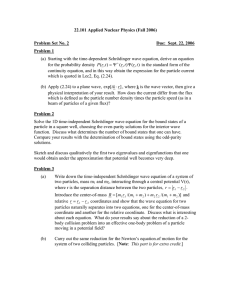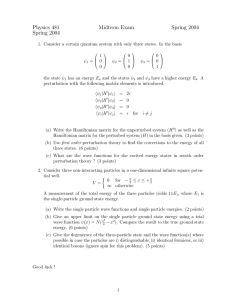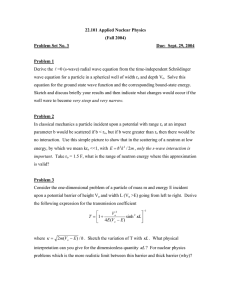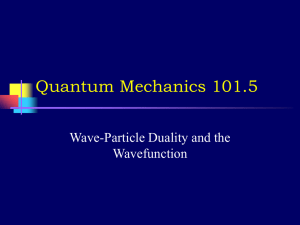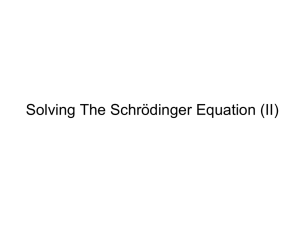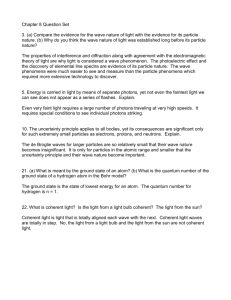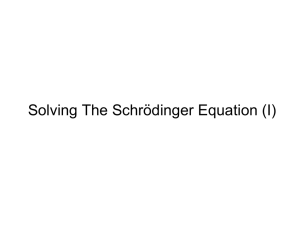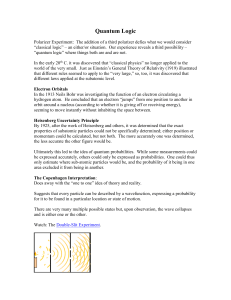22.101 Applied Nuclear Physics (Fall 2004) Problem Set No. 2
advertisement
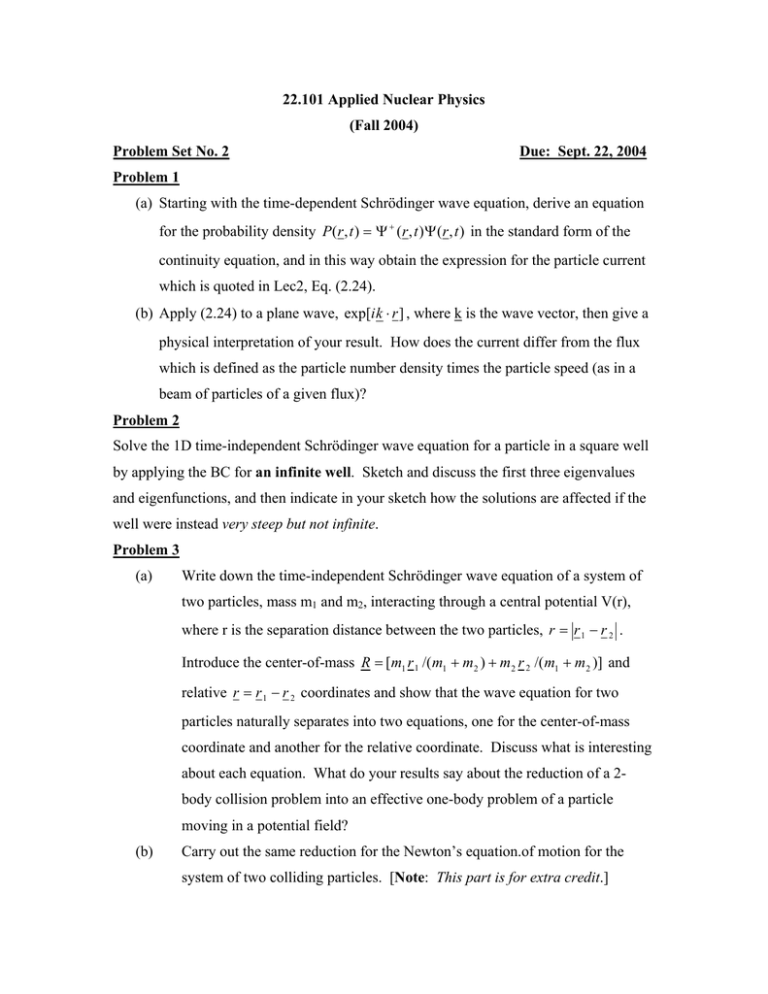
22.101 Applied Nuclear Physics (Fall 2004) Problem Set No. 2 Due: Sept. 22, 2004 Problem 1 (a) Starting with the time-dependent Schrödinger wave equation, derive an equation for the probability density P (r , t ) = Ψ + (r , t )Ψ(r , t ) in the standard form of the continuity equation, and in this way obtain the expression for the particle current which is quoted in Lec2, Eq. (2.24). (b) Apply (2.24) to a plane wave, exp[i k ⋅ r] , where k is the wave vector, then give a physical interpretation of your result. How does the current differ from the flux which is defined as the particle number density times the particle speed (as in a beam of particles of a given flux)? Problem 2 Solve the 1D time-independent Schrödinger wave equation for a particle in a square well by applying the BC for an infinite well. Sketch and discuss the first three eigenvalues and eigenfunctions, and then indicate in your sketch how the solutions are affected if the well were instead very steep but not infinite. Problem 3 (a) Write down the time-independent Schrödinger wave equation of a system of two particles, mass m1 and m2, interacting through a central potential V(r), where r is the separation distance between the two particles, r = r 1 − r 2 . Introduce the center-of-mass R = [m1 r 1 /( m1 + m2 ) + m2 r 2 /( m1 + m 2 )] and relative r = r 1 − r 2 coordinates and show that the wave equation for two particles naturally separates into two equations, one for the center-of-mass coordinate and another for the relative coordinate. Discuss what is interesting about each equation. What do your results say about the reduction of a 2­ body collision problem into an effective one-body problem of a particle moving in a potential field? (b) Carry out the same reduction for the Newton’s equation.of motion for the system of two colliding particles. [Note: This part is for extra credit.]
